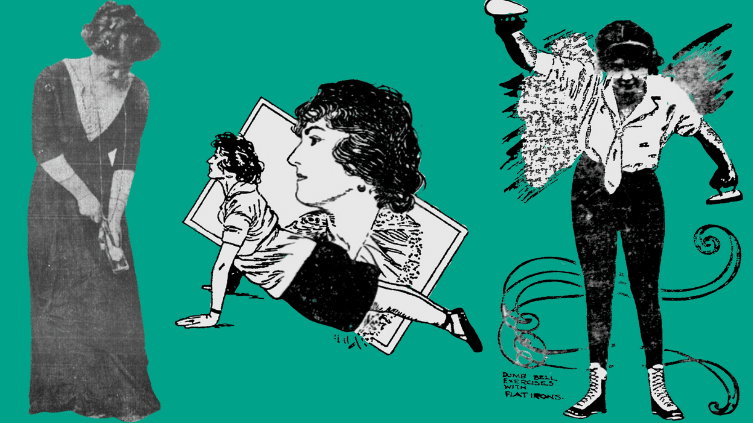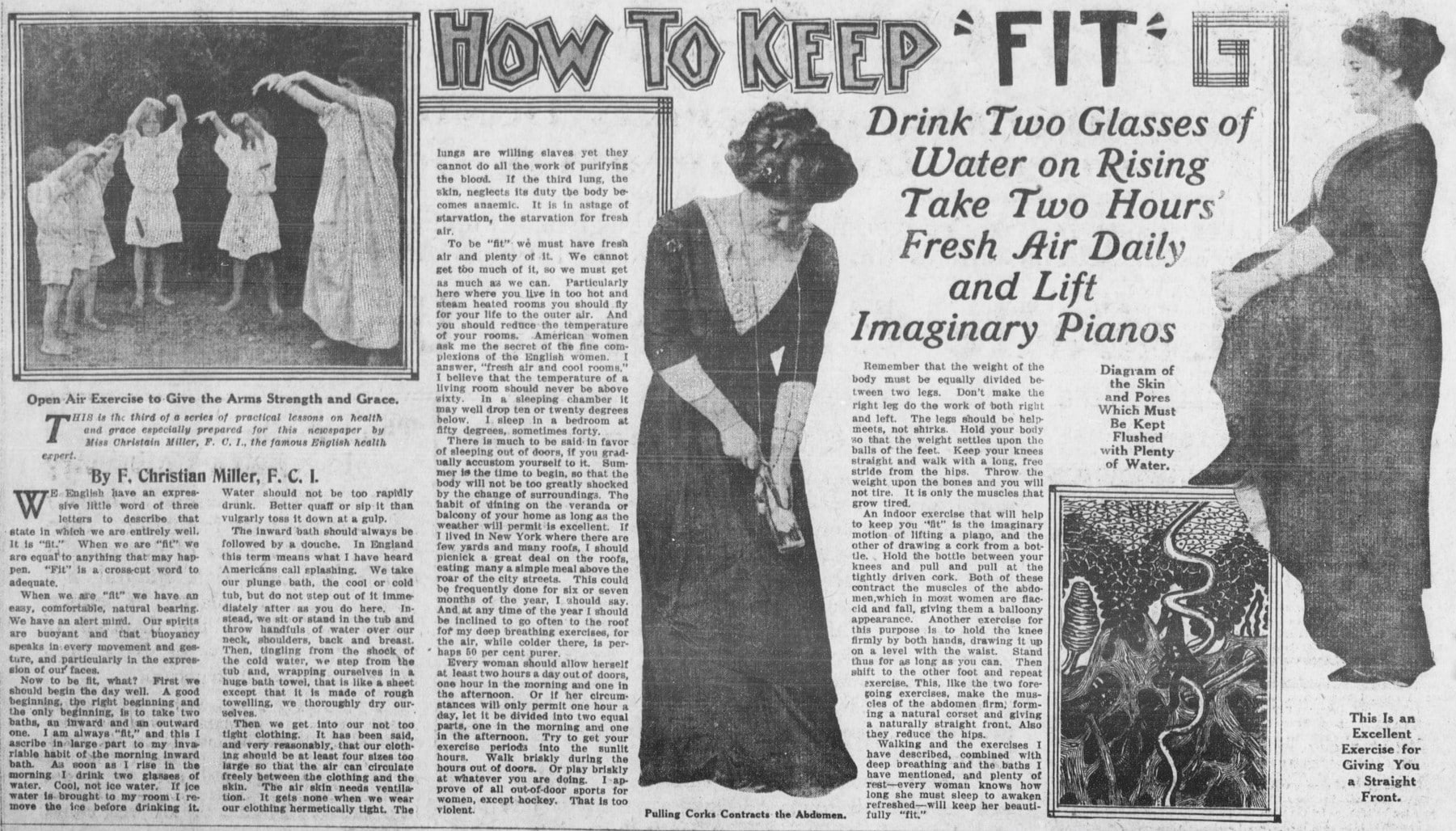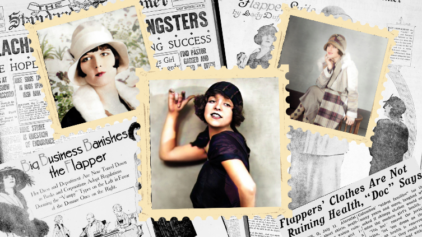Bizarre Women’s Fitness Advice from Early 1900s Newspapers
- By Daniella Levy & Naama Lanski ·


If you thought getting in shape was hard now, imagine doing it in a corset, high-button boots, an ankle-length skirt, and multiple petticoats.
Restrictive attire was just one of the many challenges faced by our female ancestors who wanted to get fit. Beauty standards in the Victorian era dictated that women should be pale in complexion and delicate in physique, and the physical activities considered appropriate for a young woman to partake in in public were quite limited. However, as time went on, women began to celebrate their own strength and vitality, propelled by societal changes such as the struggles for equal rights led by the suffragists.
In honor of National Women’s Month, our Research team dug into the historical newspapers on OldNews.com to find out how our female ancestors were advised to get in shape a century ago. Looking back at it 100 years later, these efforts to introduce fitness into women’s lives appear quite clueless and rather entertaining.
Let’s dive in:
A bottle on the head
In 1903 “ungraceful women” were advised to exercise walking up and down a room or round a garden for 15 minutes with a bottle or basket “of fair weight” placed on their head. “A court curtsey, properly made” was also recommended as a “most graceful” exercise.
“A woman’s every movement should be graceful,” states The Hazel Green Herald, which claims that U.S. women at the time were graceless: “As a nation, we are not graceful,” it says, largely due to women’s garments making “freedom of movement impossible.” No kidding.
‘A carriage ride is not exercise’
Moving a few years forward, the younger generation of American women is introduced to new concepts. According to The Los Angeles Herald in 1907, “There is no disputing the fact that girls need exercise as much as boys, and the day has long gone by when a frail, delicate, white faced girl was regarded as being a model of femininity.” In quite a revolutionary statement, the article declares that it is okay for girls to be “strong and ruddy. Good health is not the prerogative of one sex, and good health can only be preserved by exercise. Perhaps many do not know what exercise really is. A carriage ride is not exercise, neither is housework.”
The author lists many activities that make excellent exercise for girls, including croquet, lawn tennis, rowing, swimming, pitching quoits (rings made of metal or rubber), badminton, cycling, and walking. He even says that girls swim more gracefully than boys, and learn quicker, and that swimming has the added benefit of being potentially life-saving.
However, it seems this message was not taken to heart. Articles published years later indicate that the concept of exercise still wasn’t very clear, nor was the difference between exercise and housework — and American women kept receiving contradicting messages.
Imaginary pianos and sleeve irons
In 1911 women were encouraged by Omaha Daily Bee to keep fit by exercising indoors, “lifting imaginary pianos” and drawing corks from bottles: “Hold the bottle between your knees and pull and pull at the tightly driven cork.”
Other important recommendations included taking two “baths” each morning: an “inward bath,” meaning drinking two glasses of water to cleanse the body from the inside, and an “outward bath,” which means a soak in warm water followed by a vigorous rinse with cold water. Women were also advised to wear “not too tight clothing… at least four sizes too large so that air can circulate freely.” Every woman should also “allow herself at least two hours a day out of doors,” one in the morning and one during the afternoon, to enjoy exposure to fresh air.
In 1915, The Pittsburgh Pressrecommended using little flatirons as dumbbells, for women’s “home gymnasium.” As an added bonus, when not being used as exercise props, the irons may be used “for convenient little sleeve irons.”
‘Learn how to become perfect’
In an article published September 1916, during WWI, an important reason for women’s exercise routine was emphasized: “The question of perfect physical development in a woman is one of great importance in the present day, when the future of all the nations of the world occupying the public mind to so great an extent… the future of the American race depends, to a large degree, upon the mothers.” There was even a competition titled “Physically perfect girl,” and according to its 18 year old champion, “Every woman can easily learn how to become perfect” like her if she trains steadily and exercises consistently.
The South Bend News-Times encouraged young women in 1921 to get fit by “helping mother with house work.” The article reveals that Marie Kuhn, yet another “perfect girl,” got her wonderful physical attributes and splendid figure from helping her mother “mixing dough, baking, dusting and washing dishes.” The very active Kuhn, who also loved swimming, canoeing and playing basketball, was introduced as a model to every American girl, “particularly the girl who is habituated to dodging housework as irksome, boresome and ruinous of white hands and good looks. It may set this type of girl to thinking — and washing dishes — and it may bring about a change of home conditions that will be beneficial to the girl, helpful to the tired but uncomplaining mother and conducive to perfect peace in the family circle!” Yikes.
Next time you’re taking a morning jog or working on your deadlifts at the gym, you can think about how far we’ve come from lifting imaginary pianos.
Meanwhile, discover more about your ancestors and the world they lived in by searching historical newspapers on OldNews.com!















